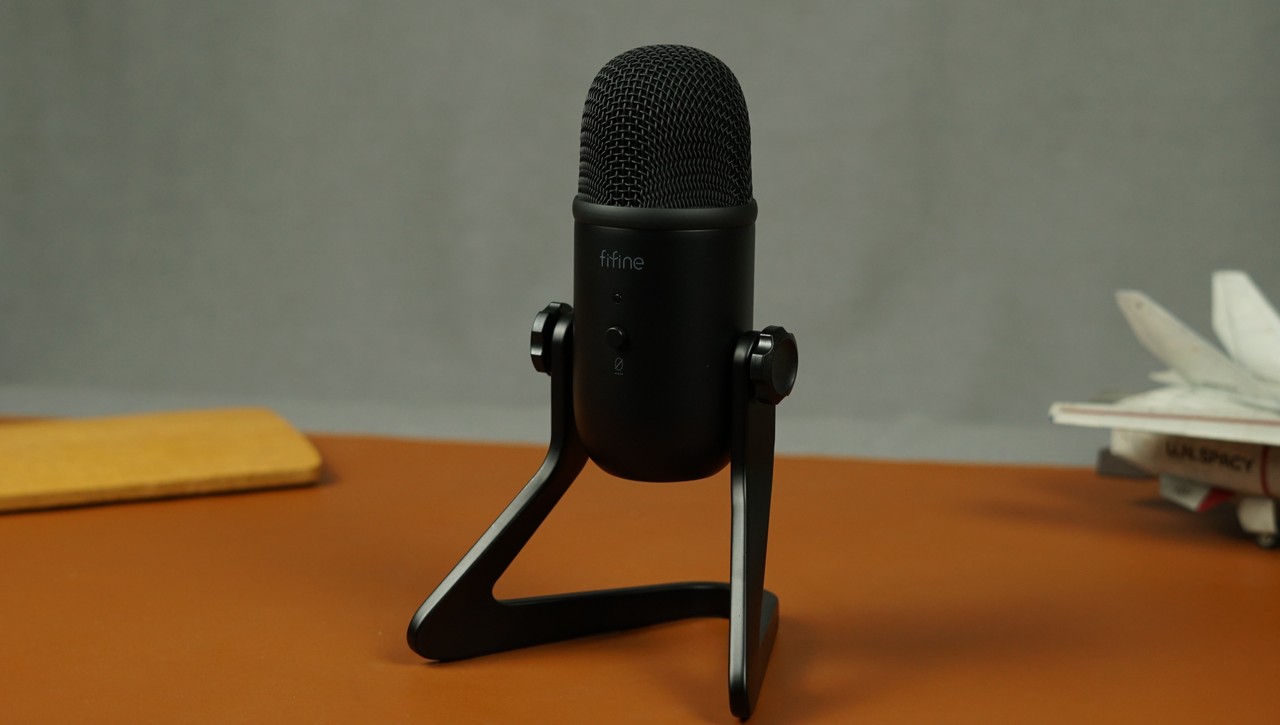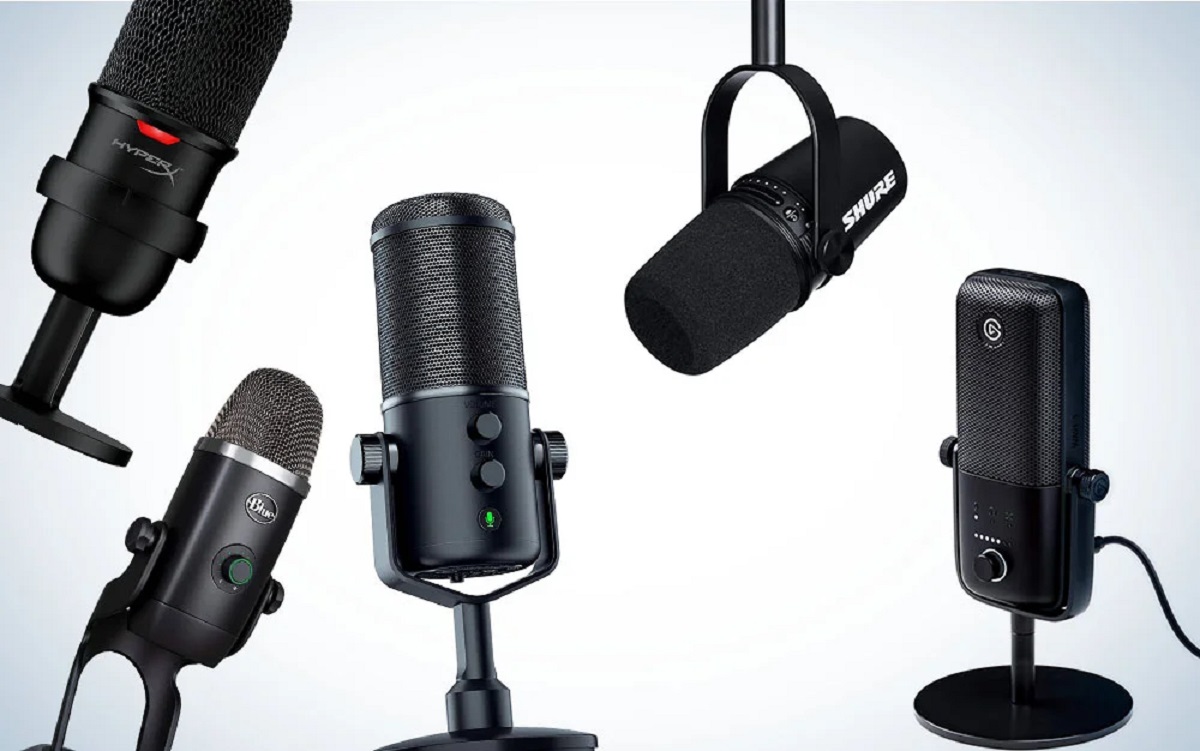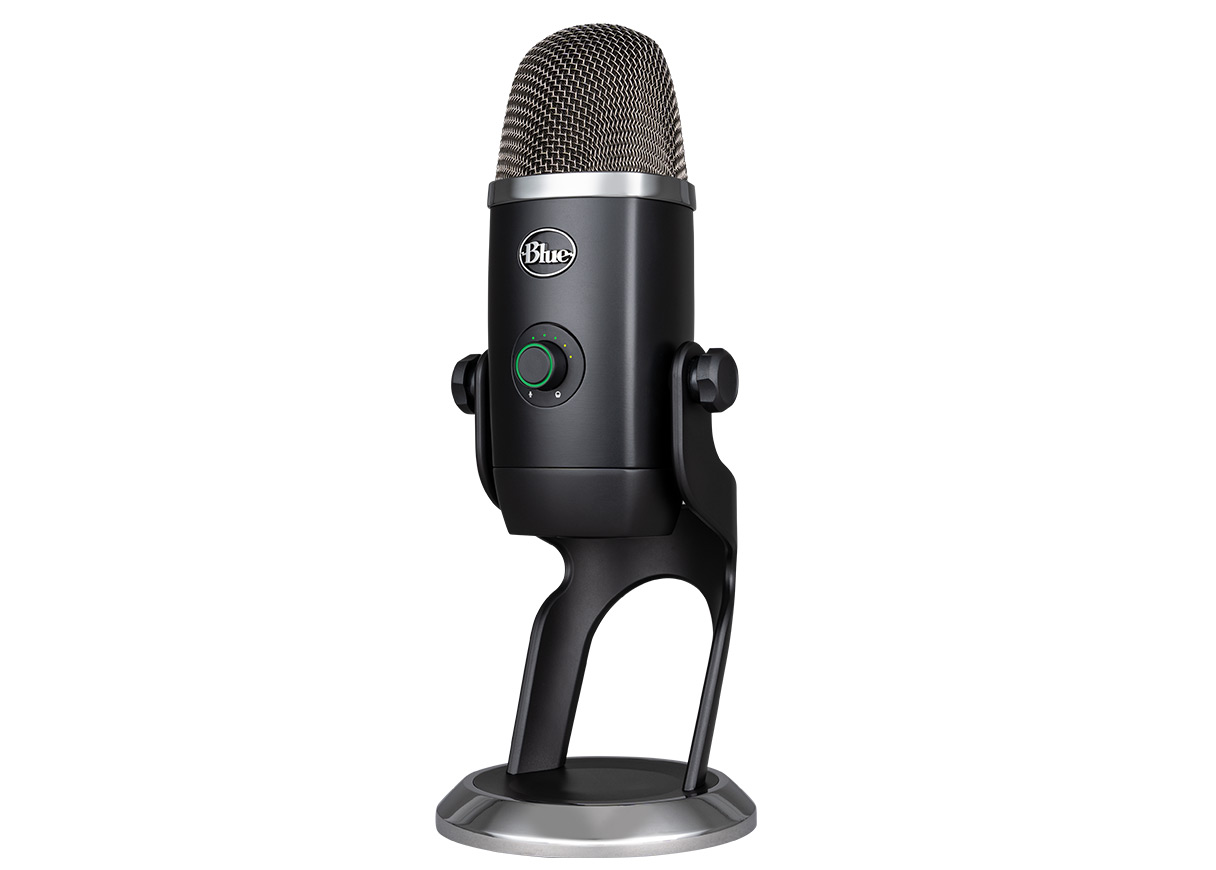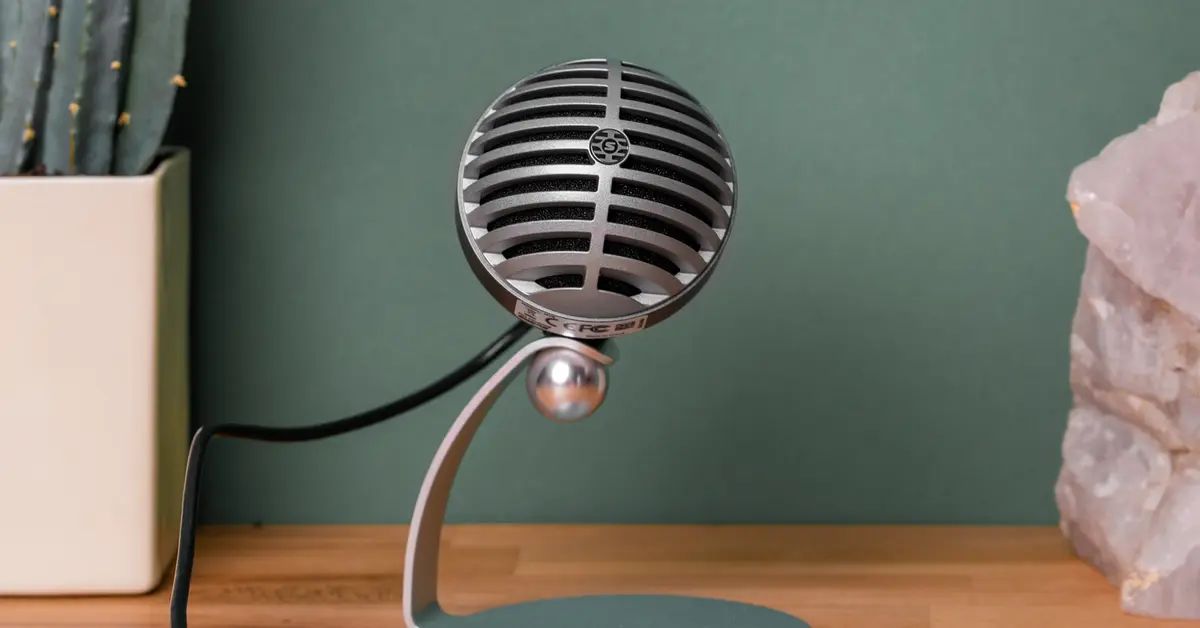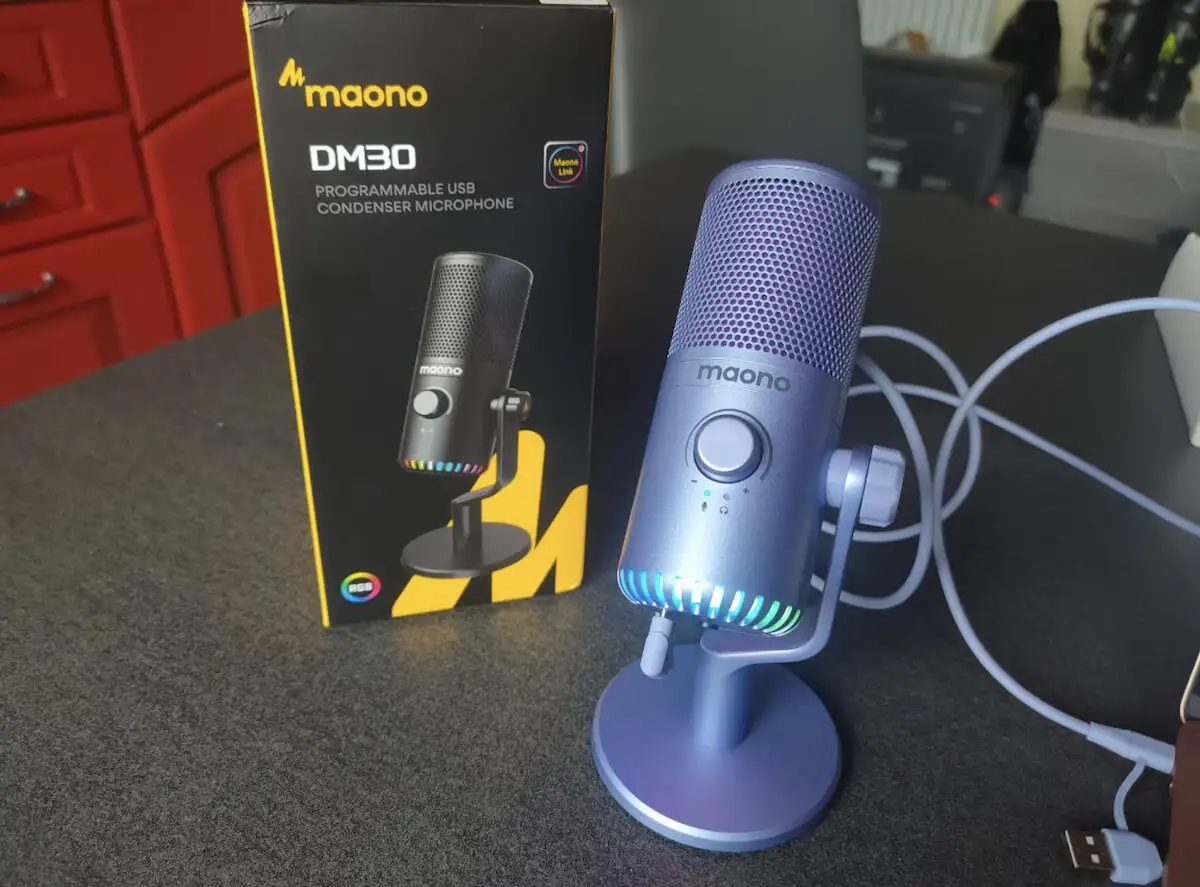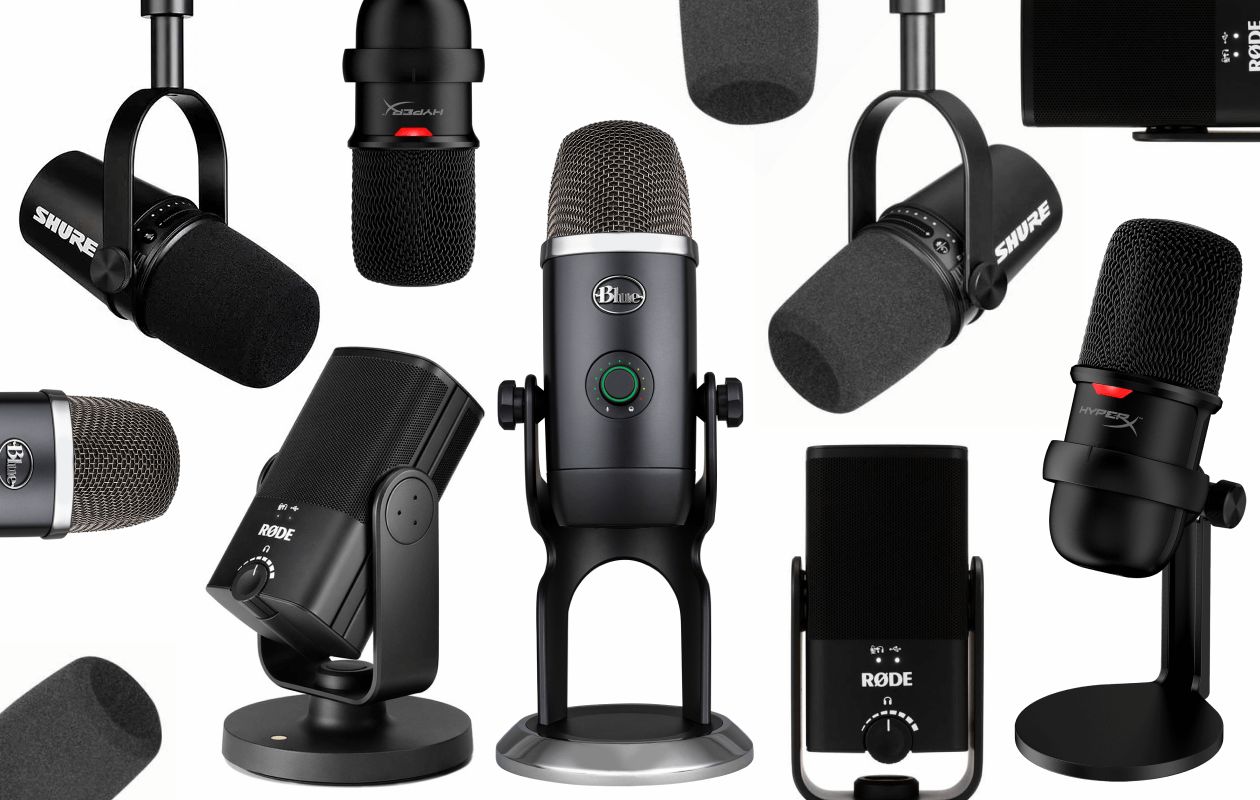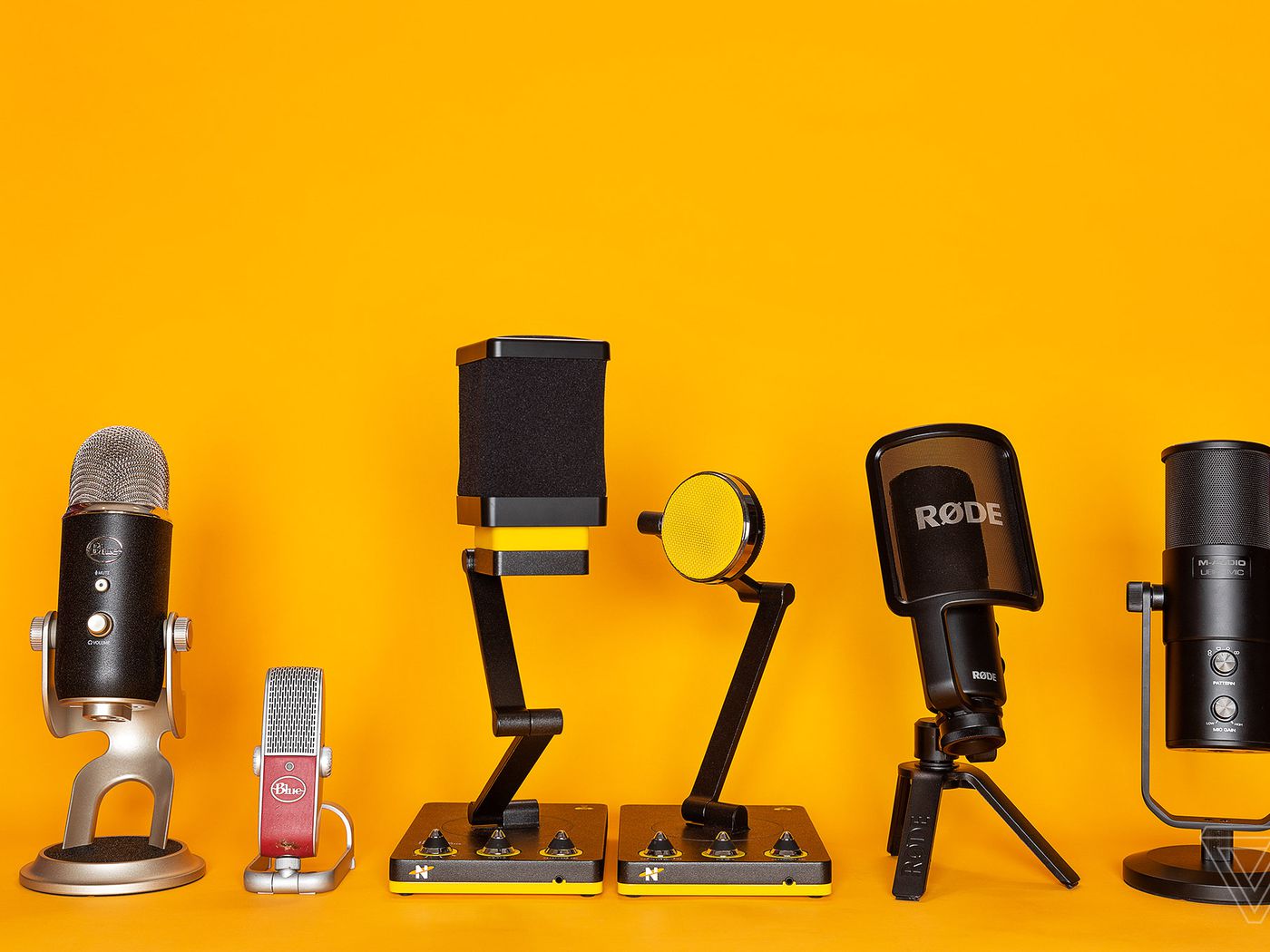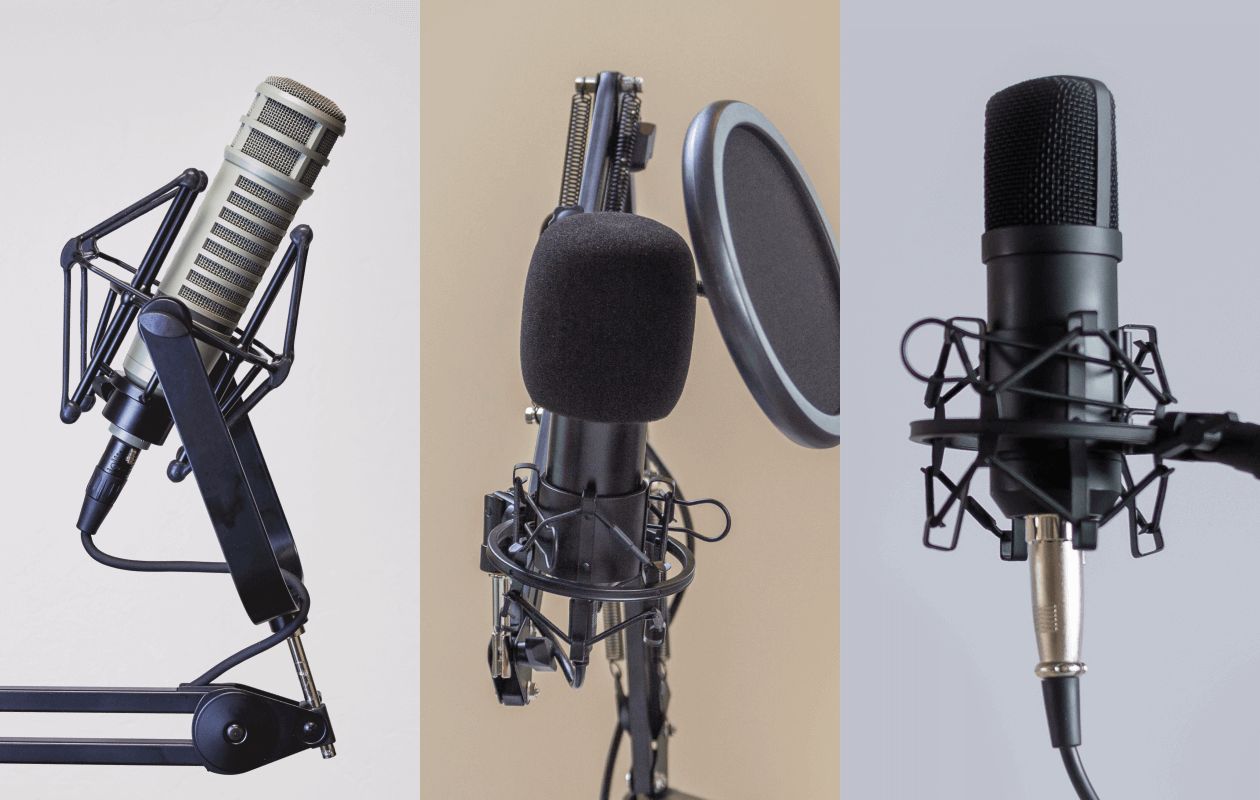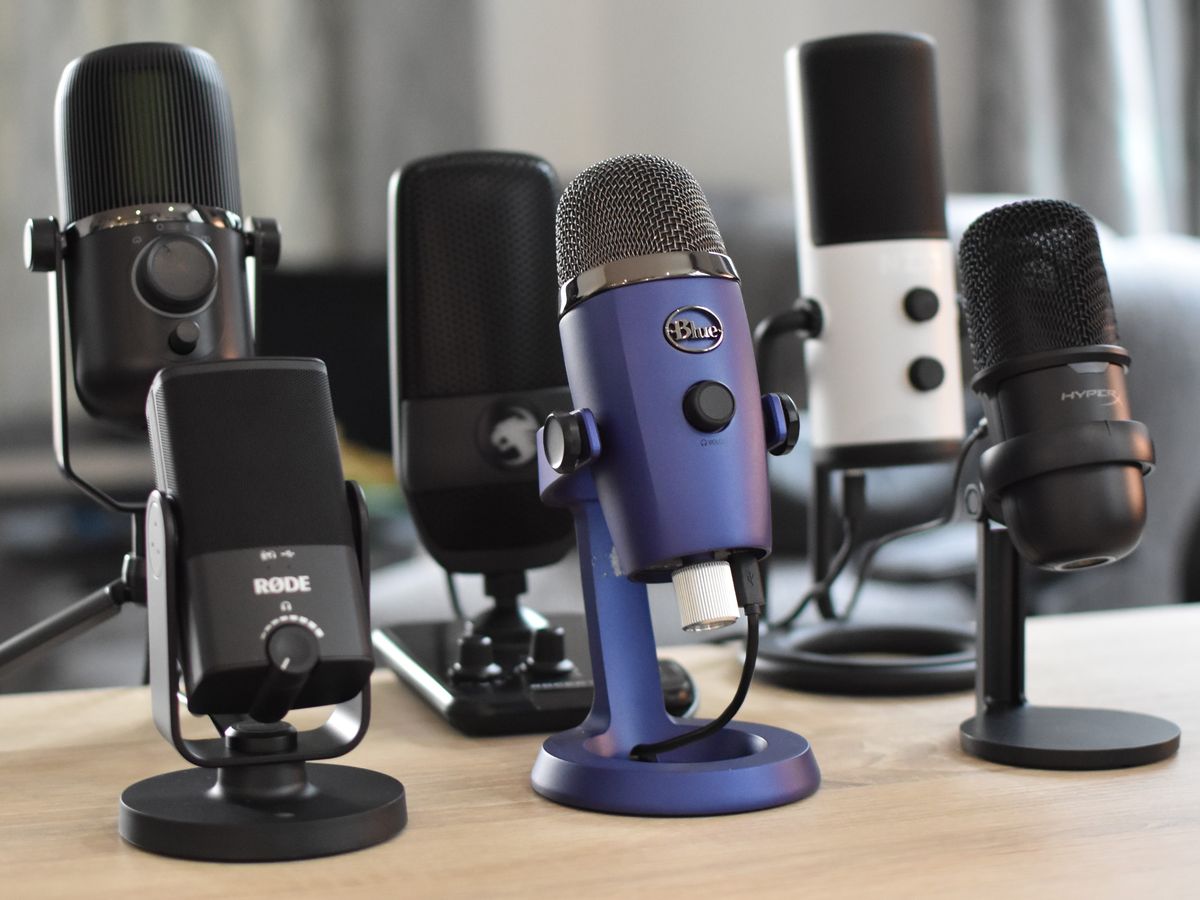Introduction
Welcome to the fascinating world of condenser microphones! These incredible devices have revolutionized the way we capture sound, offering exceptional clarity and precision. Whether you're a professional musician, podcaster, content creator, or simply someone who appreciates high-quality audio, understanding how condenser microphones work can deepen your appreciation for these remarkable pieces of technology.
In this article, we'll delve into the inner workings of condenser microphones, exploring their components, applications, and tips for optimal usage. By the end, you'll have a comprehensive understanding of these versatile devices and how they play a crucial role in the world of audio recording and broadcasting.
Condenser microphones have become indispensable tools in the realms of music production, broadcasting, podcasting, and more. Their ability to capture nuanced sound with exceptional clarity and detail has made them a top choice for professionals and enthusiasts alike. Whether you're recording vocals, instruments, or ambient sounds, condenser microphones excel in capturing the subtleties that bring audio recordings to life.
As we embark on this exploration of condenser microphones, prepare to uncover the intricate mechanisms that enable these devices to convert sound waves into electrical signals. From diaphragms to phantom power, each component plays a vital role in the microphone's ability to faithfully reproduce sound. Additionally, we'll discuss practical tips for using condenser microphones to achieve optimal results in various recording scenarios.
So, let's embark on this enlightening journey into the realm of condenser microphones, unraveling the mysteries behind their functionality and discovering the myriad ways they enhance the audio recording experience. Whether you're a seasoned audio professional or an aspiring enthusiast, this exploration promises to deepen your appreciation for the art and science of sound capture.
What is a Condenser Microphone?
A condenser microphone, also known as a capacitor microphone, is a vital tool in the realm of audio recording and broadcasting. Unlike dynamic microphones, which operate on electromagnetic induction principles, condenser microphones utilize an electrostatic principle to capture sound. This distinction results in a higher sensitivity to sound waves and a superior ability to reproduce nuanced audio details.
The core of a condenser microphone is its capacitor, comprising two conductive plates separated by a small gap. One of these plates is a diaphragm, typically made of a thin material such as gold-sputtered mylar. When sound waves reach the diaphragm, it vibrates in response to the varying air pressure, causing the distance between the plates to change. As a result, the capacitance of the system fluctuates in tandem with the sound waves, effectively converting acoustic energy into electrical signals.
One of the defining features of condenser microphones is their ability to capture a wide frequency range with exceptional accuracy, making them ideal for recording vocals, acoustic instruments, and ambient sounds. Additionally, their low mass diaphragms enable them to respond swiftly to sound waves, ensuring the faithful reproduction of transient audio details.
Condenser microphones are available in various configurations, including large diaphragm and small diaphragm designs, each offering distinct sonic characteristics suited to different recording applications. Large diaphragm condenser microphones are favored for their warm and rich sound, making them popular choices for vocal recording and studio applications. On the other hand, small diaphragm condenser microphones excel in capturing fast transients and high-frequency details, making them ideal for recording acoustic instruments and capturing intricate soundscapes.
These microphones typically require power to operate, commonly supplied in the form of phantom power from mixing consoles, audio interfaces, or dedicated power supplies. Some condenser microphones feature internal batteries or utilize USB connections for power, offering greater flexibility in various recording environments.
By understanding the fundamental principles and capabilities of condenser microphones, you can appreciate their pivotal role in capturing the nuances and subtleties that define high-quality audio recordings. Whether in professional studios, live sound reinforcement, or home recording setups, condenser microphones continue to shape the sonic landscapes of diverse audio productions.
How Does a Condenser Microphone Work?
Condenser microphones operate on the principle of electrostatic transduction, where sound waves are converted into electrical signals through the interaction of charged components within the microphone. Understanding the intricate process behind this conversion sheds light on the exceptional performance and versatility of condenser microphones.
At the heart of a condenser microphone is the capacitor, consisting of a diaphragm and a backplate separated by a small air gap. The diaphragm, typically a thin membrane made of conductive material, serves as one plate of the capacitor, while the backplate functions as the opposing plate. These components are charged with a fixed voltage, creating an electrostatic field between them.
When sound waves reach the diaphragm, it undergoes minute movements in response to the varying air pressure caused by the sound. These movements result in changes in the distance between the diaphragm and the backplate, causing fluctuations in the capacitance of the system. As a result, the varying capacitance generates an electrical signal that faithfully represents the incoming sound waves.
To maintain the electrostatic charge required for the microphone’s operation, condenser microphones typically require an external power source. Phantom power, commonly supplied at +48 volts, is a standard method of providing this necessary voltage. This power is essential for polarizing the capacitor and enabling the conversion of sound waves into electrical signals.
One of the key advantages of condenser microphones is their high sensitivity to sound, allowing them to capture subtle audio details with exceptional clarity. Their ability to faithfully reproduce a wide frequency range, from delicate high frequencies to powerful low frequencies, makes them indispensable tools in recording vocals, acoustic instruments, and ambient sounds.
Furthermore, condenser microphones exhibit low self-noise, contributing to the pristine quality of their recordings. This characteristic, coupled with their transient response and ability to capture rapid changes in sound, makes them ideal for capturing the nuances of musical performances and vocal expressions.
By harnessing the principles of electrostatic transduction, condenser microphones have earned their reputation as indispensable tools for audio professionals and enthusiasts. Their ability to faithfully capture the intricacies of sound has cemented their status as essential components in the world of music production, broadcasting, and content creation.
Components of a Condenser Microphone
A condenser microphone comprises several essential components that work in harmony to capture sound with precision and clarity. Understanding the functions of these components illuminates the inner workings of condenser microphones and their ability to faithfully reproduce audio signals.
Diaphragm: The diaphragm serves as the primary sound-capturing element of a condenser microphone. Typically made of a thin, conductive material such as gold-sputtered mylar, the diaphragm responds to incoming sound waves by vibrating in tandem with the variations in air pressure. This movement modulates the distance between the diaphragm and the backplate, leading to changes in capacitance and the generation of electrical signals.
Backplate: Positioned in close proximity to the diaphragm, the backplate functions as the opposing plate of the capacitor within the microphone. Its fixed position relative to the diaphragm enables the generation of electrical signals through the variations in capacitance induced by the diaphragm’s movements.
Capacitor: At the core of the condenser microphone, the capacitor consists of the diaphragm and the backplate, separated by a small air gap. This configuration allows for the modulation of capacitance in response to sound waves, leading to the conversion of acoustic energy into electrical signals.
Phantom Power: Many condenser microphones require an external power source to polarize the capacitor and facilitate the conversion of sound into electrical signals. Phantom power, typically supplied at +48 volts, fulfills this requirement and is commonly provided by mixing consoles, audio interfaces, or dedicated power supplies.
Electronics: Within the microphone’s body, electronic components such as amplifiers and impedance converters play crucial roles in processing and transmitting the electrical signals generated by the capacitor. These components ensure that the microphone’s output signals are robust and compatible with recording devices and audio systems.
Housing and Grille: The housing of a condenser microphone encases and protects its internal components, providing structural integrity and shielding against external interference. The grille, often located at the microphone’s front, serves to protect the diaphragm while allowing sound waves to reach it unhindered.
Each of these components contributes to the remarkable performance and versatility of condenser microphones, enabling them to capture the nuances of sound with exceptional fidelity. By understanding the roles and interactions of these components, audio professionals and enthusiasts can gain a deeper appreciation for the engineering excellence that underpins these essential tools in the world of audio recording and broadcasting.
Applications of Condenser Microphones
Condenser microphones find widespread use across a diverse range of audio recording and broadcasting applications, owing to their exceptional sensitivity, fidelity, and versatility. Their ability to capture nuanced sound with clarity and precision has made them indispensable tools in the following scenarios:
- Music Recording: In professional studios and home recording setups, condenser microphones excel in capturing vocals, acoustic instruments, and ensemble performances with remarkable detail and warmth. Their wide frequency response and transient accuracy make them ideal for capturing the subtleties of musical performances, enriching recordings with lifelike sonic textures.
- Broadcasting and Podcasting: Condenser microphones are favored in broadcasting and podcasting environments for their ability to faithfully reproduce speech and vocal expressions. Whether used in radio studios, podcasting setups, or voice-over recordings, condenser microphones deliver articulate and clear audio, enhancing the communication of ideas and narratives.
- Field Recording: For capturing environmental sounds, ambient textures, and on-location interviews, condenser microphones offer exceptional sensitivity and transient response. Their ability to capture the nuances of natural and urban environments makes them valuable tools for sound designers, filmmakers, and documentary producers seeking to convey immersive auditory experiences.
- Live Sound Reinforcement: In concert venues, theaters, and houses of worship, condenser microphones are employed to amplify acoustic instruments, choirs, and solo vocalists. Their ability to capture the subtleties of live performances contributes to the sonic richness and clarity of amplified sound, enhancing the audience’s listening experience.
- Audio for Video Production: Condenser microphones play a crucial role in capturing dialogue, foley effects, and atmospheric sounds for film, television, and video productions. Their ability to capture detailed soundscapes and vocal performances contributes to the immersive and emotive qualities of audiovisual storytelling.
Furthermore, the versatility of condenser microphones extends to specialized applications such as ASMR (Autonomous Sensory Meridian Response) recording, scientific research, acoustic measurement, and teleconferencing. Their ability to capture delicate sounds and intricate details makes them valuable assets in a wide array of professional and creative endeavors.
By leveraging the exceptional capabilities of condenser microphones, audio professionals, content creators, and performers elevate the quality and impact of their productions, fostering engaging and immersive auditory experiences across various mediums and platforms.
Tips for Using a Condenser Microphone
Maximizing the performance of a condenser microphone involves understanding its characteristics and implementing best practices for optimal results. Whether you’re recording vocals, instruments, or environmental sounds, the following tips can help you harness the full potential of your condenser microphone:
- Use a Pop Filter: When recording vocals, employing a pop filter in front of the microphone helps minimize plosive sounds caused by bursts of air, resulting in cleaner and more intelligible recordings.
- Positioning and Distance: Experiment with microphone placement to achieve the desired sound. For vocals and solo instruments, positioning the microphone at a distance of 6 to 12 inches allows for a balanced capture of sound while minimizing proximity effect.
- Phantom Power: Ensure that your recording interface or mixer provides phantom power if your condenser microphone requires it. Activate phantom power only when the microphone is connected to avoid potential damage.
- Room Acoustics: Consider the acoustic characteristics of your recording space. Minimize reflective surfaces and employ acoustic treatment to reduce unwanted room reflections and ambient noise, enhancing the clarity of your recordings.
- Handling and Care: Handle the microphone with care to avoid damage to the diaphragm and internal components. When not in use, store the microphone in a protective case to shield it from dust and physical impact.
- Experiment with Polar Patterns: If your condenser microphone features selectable polar patterns, explore the sonic characteristics of each pattern to find the most suitable option for your recording scenario. Cardioid, omni-directional, and figure-8 patterns offer distinct sound capture capabilities.
- Monitor Signal Levels: Keep an eye on the microphone’s signal levels to prevent clipping and distortion. Adjust input gain and monitoring levels to ensure a healthy signal-to-noise ratio and avoid overloading the microphone’s preamp or the recording interface.
- Environmental Considerations: Be mindful of environmental factors such as air conditioning noise, traffic, and other ambient sounds that can affect the quality of your recordings. Recording during quieter times or employing noise reduction techniques can mitigate these issues.
- Post-Processing and Equalization: Exercise restraint when applying post-processing effects and equalization to your recordings. A well-captured sound with minimal processing often yields more natural and authentic results.
By incorporating these tips into your recording practices, you can harness the full potential of your condenser microphone, achieving professional-quality recordings with clarity, depth, and fidelity. Whether in the studio, on location, or in live performance settings, these best practices contribute to the seamless integration of condenser microphones into diverse audio production workflows.







